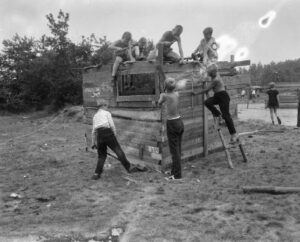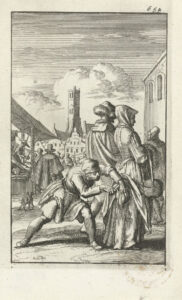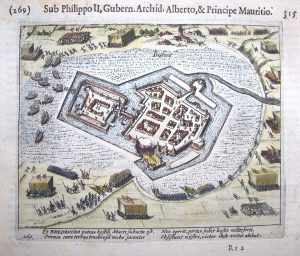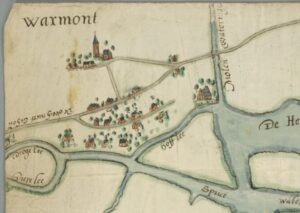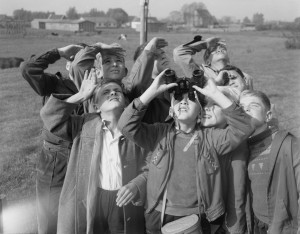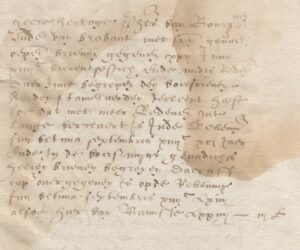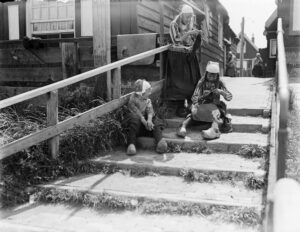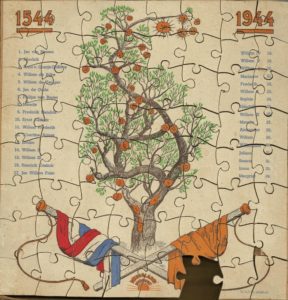When you get stuck, you can expand the scope of your research to increase the chances of finding relevant evidence. Here are some different ways to expand the scope: Research more people: the children of your brick wall ancestor, known siblings, spouses (if they were married multiple times), neighbors and other associates Research the property they owned or rented, to find out how and when it got into the family and where it went next. Expand your geographic area. People often created … [Read more...]
Quick tip – Check the surrounding records
If you find your ancestor in a record, it may pay off to check the surrounding records too. Examples: Browsing the surrounding birth or baptismal records may show if your ancestor was a twin or triplet Browsing the previous and next civil registration or notarial records may show if they had the same witnesses, which suggests they were witnesses of convenience rather than people who had a personal connection to the parties. Checking the previous and next notarial records may show … [Read more...]
Quick tip – Investigate gaps between children
If you are researching a family before in the period before modern birth control methods, a gap in children is worth investigating further. Possible reasons for the gap include: You may not have found all the children yet. For example, the family may have lived elsewhere, and you have not consulted the birth or baptismal records there. There may have been stillbirths or miscarriages. Since the introduction of the civil registration (1811 in most parts of the Netherlands), stillborn … [Read more...]
Quick tip – Who was the previous owner?
When you hit a brick wall and the ancestor whose parents you're looking for owned property, try and find out who owned the property previously. The previous owner may have been related, if the ancestor inherited the property, or may have created a sale or conveyance record that mentions your ancestor. For an example of how useful tracing the previous owner can be, read my article "Griete Smith's Parentage: Proof in the Absence of Vital Records" (PDF) as it appeared in the December 2016 issue … [Read more...]
Dutch term – Bron
Bron is the Dutch term for "source." The word also means "spring," in the meaning of a place where water naturally comes to the surface. … [Read more...]
Using Proof by Contradiction to Focus your Research
Those who came to genealogy from a science background are likely familiar with “proof by contradiction”—a way to prove a theory by demonstrating that its opposite leads to an insupportable contradiction.[1] Many genealogists use this technique, often implicitly. Whatever the name, genealogists benefit from understanding how to apply the technique to improve research efficiency and focus. Using proof by contradiction, a three-step mathematical example proves the theory that there is no … [Read more...]
5 Ways to Assess Online Trees and Other Publications
Many of my research projects start with a survey of published literature: journals, books, and online trees. Here are five ways I assess the quality and reliability of these publications. Sources The first thing I look for are the sources: If the publication has no sources, there is no way to evaluate the quality of the underlying research. If the publication only lists other trees or published genealogies as sources, that implies the compiler did not do original research. If the … [Read more...]
Quick tip – Don’t Stop Looking When They’re Dead
Sometimes, relevant records are produced long after the person of interest is dead. Here are some examples: An estate may remain undivided during the surviving spouse's lifetime. The records of how the estate was divided and who the heirs were might be decades later. A record may have been copied at a later time, for example as part of court proceedings or a chartulary. The original record may not survive, but the later copy might. Land records may include details about the … [Read more...]
Quick tip – Follow up in other records
When we find our ancestor in one record, we can often use it as a stepping stone to finding other records. The record can be like a loose thread to unravel a greater yarn. Here are some examples: A marriage record may have a note in the margin about a divorce. It should name the court and date of the divorce. You can use this to find the case file in the court records. A marriage record has supplements that are abstracts of other records. You can use these to find the originals. It … [Read more...]
Quick Tip – There’s Nothing Wrong With Speculation
When you are researching your ancestors, there is nothing wrong with speculation. Building and testing hypotheses is a great way to discover new evidence that may help you prove your case. Just don't confuse speculation with proof, and make sure to not spread speculative information without clearly labeling as such (or not at all, to prevent people from jumping to conclusions). For example, if you are trying to find the parents of your brick wall ancestor Cornelis, and you know his oldest son … [Read more...]
